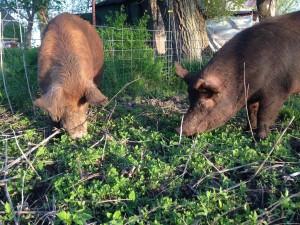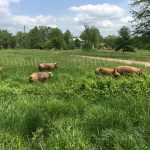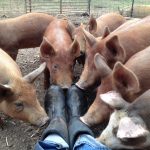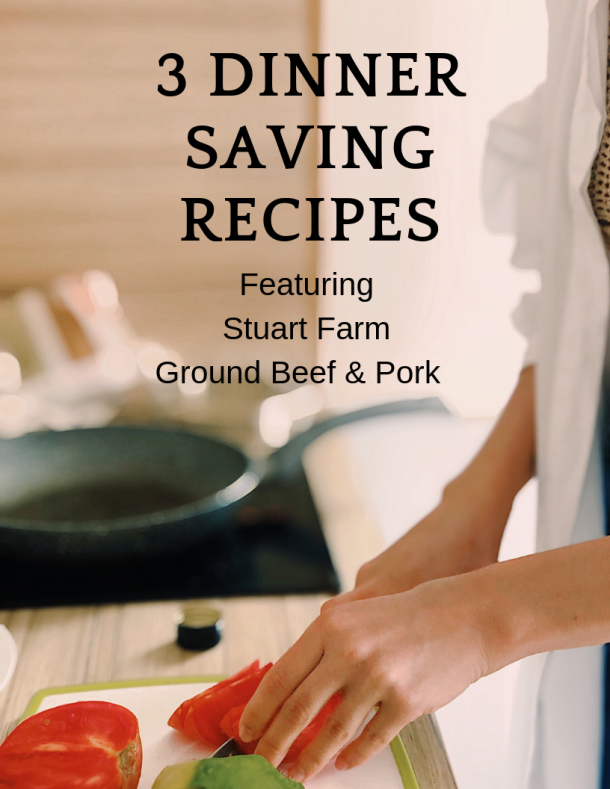What our customers say…
“I had your chops and I have to say that’s the best pork I have ever eaten.”
“My father is addicted to your breakfast sausage.”
“Those were the most beautiful, gloriously flavored pork chops I’ve had in forever! Thank you SO much! We’re so grateful for all the care, love, and attention you all put into your animals.”
After much research and with the goal of having a good foraging heritage breed pig, we decided on Tamworths. We found 2 sows, Gertie Lynn and Flossie Mae, to join our farm in April 2015. We utilize some of our woods to allow them to forage for acorns, hickory nuts, and whatever other treats they find. We have them on pasture, allowing them to till up the soil so we can plant new grasses and forage for them and the cattle. They are fed a non-GMO custom fermented ration to supplement what they find in the pastures. Our sows are never crated, our piglets do not have their tails docked or teeth trimmed, castration is done at 3-7 days old, and they always have soil under their hooves.
The Livestock Conservancy lists the Tamworth status as threatened and has this to say about the breed:
“The characteristics of the Tamworth reflect the breed’s centuries of selection for an outdoor life. Pigs of this breed were expected to find their own food, especially mast (or acorns) of oak and beech forests. Long heads and impressive snouts enable these pigs to be efficient foragers. Long, strong legs and sound feet give Tamworth pigs the ability to walk for considerable distances. Ginger red coats make the pigs adaptable to a variety of climates and protect them from sunburn. Tamworths have an active intelligence, and they are agreeable in disposition. Sows are prolific, able to produce and care for large litters. The piglets are vigorous and often have 100% survivability. Both sexes of this breed reach a mature weight of 500-600 lbs (227-272 kg).
The Tamworth was traditionally considered a “bacon” breed, meaning that the pigs thrived on low energy foods but grew slowly. They produced meat and bacon that was lean and fine grained. The breed has an excellent carcass yield of up to 70% due to their fine bones creating a more productive meat to bone ratio for finished meat products. The breed takes its name from the village of Tamworth in Staffordshire.”
Ready to place an order? CLICK HERE.




